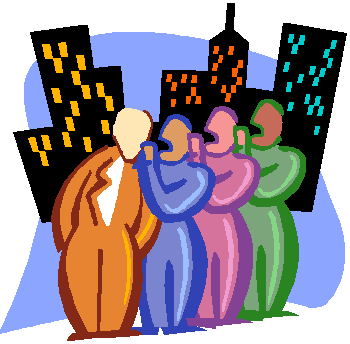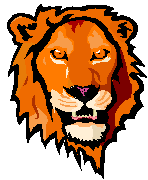





| |
 The theory of designs is a conceptual model by which we understand and
categorize the distinguishable aspects of life. Designs can be compared to a
blueprint that presents predetermined plans for the structure, function and
development of each aspect of the universe, both animate and inanimate. Designs
form the reality of our life. Some designs are fixed and remain constant while
others are in a state of constant change. This section explores how to use this
understanding for personal well-being. By developing a command of these
principals you will be able to maximize the enjoyment and results in your
business and personal life. The theory of designs is a conceptual model by which we understand and
categorize the distinguishable aspects of life. Designs can be compared to a
blueprint that presents predetermined plans for the structure, function and
development of each aspect of the universe, both animate and inanimate. Designs
form the reality of our life. Some designs are fixed and remain constant while
others are in a state of constant change. This section explores how to use this
understanding for personal well-being. By developing a command of these
principals you will be able to maximize the enjoyment and results in your
business and personal life.
Designs are the seeds from which all things originate, both animate and
inanimate.
Human life
 They are the common foundations from which we develop our
lives. That is why people in different cultures tend to have similar emotions, behaviors,
social and religious rituals, symbols, social organizations, and ways of
perceiving and thinking. Each of those phenomena is based upon a design that
exists in everyone.
They are the common foundations from which we develop our
lives. That is why people in different cultures tend to have similar emotions, behaviors,
social and religious rituals, symbols, social organizations, and ways of
perceiving and thinking. Each of those phenomena is based upon a design that
exists in everyone.
Animal life
 We can also attribute animals' universal instinctive behaviors
to designs. We can also attribute animals' universal instinctive behaviors
to designs.
Inanimate objects
 We can attribute the behaviors of inanimate objects to
designs. Those behaviors would include the chemical and electrical activities of
rocks, water, stars, galaxies, and the universe itself. We can attribute the behaviors of inanimate objects to
designs. Those behaviors would include the chemical and electrical activities of
rocks, water, stars, galaxies, and the universe itself.
 The universe is made up of designs that we relate to on a conscious and
subconscious level. These designs are aspects of energy. Energy is a
homogeneous substance, but it has various distinct characteristics when it takes
material form. When we perceive these characteristics we attribute them to a
design. The environment through its physical embodiment can act as a tree.
Therefore, we can say that there is a tree design within the substance of
energy. The universe is made up of designs that we relate to on a conscious and
subconscious level. These designs are aspects of energy. Energy is a
homogeneous substance, but it has various distinct characteristics when it takes
material form. When we perceive these characteristics we attribute them to a
design. The environment through its physical embodiment can act as a tree.
Therefore, we can say that there is a tree design within the substance of
energy.
The benefits of understanding designs.
 |
We recognize the common ground that we share with other people
and with everything else. Most spiritual teachers claim that the foundation for
this oneness is in our undifferentiated spiritual essence. If we do not perceive
that "spirit", we can surely recognize the design expressions of it such as our
similar emotions. With this commonality in human society, we understand one
another's feelings and behaviors, because people are responding to the same
designs that we know. Without these collective, common designs, humans would not
be able to communicate at all from their separate, individual worlds. spiritual essence. If we do not perceive
that "spirit", we can surely recognize the design expressions of it such as our
similar emotions. With this commonality in human society, we understand one
another's feelings and behaviors, because people are responding to the same
designs that we know. Without these collective, common designs, humans would not
be able to communicate at all from their separate, individual worlds. |
 |  We clarify and simplify the tasks of human life and of personal growth
by recognizing underlying designs in each situation. We simplify in the sense
that we are not bewildered by the infinite variations of life but instead we can
methodically deal with the finite number of designs from which those variations
arise. This clarification and simplification assist us in both our human life
and our personal explorations. We clarify and simplify the tasks of human life and of personal growth
by recognizing underlying designs in each situation. We simplify in the sense
that we are not bewildered by the infinite variations of life but instead we can
methodically deal with the finite number of designs from which those variations
arise. This clarification and simplification assist us in both our human life
and our personal explorations.
 | Human life
Sometimes life seems to be a random array of experiences, at other times we
recognize recurring events such as a pattern of unpleasant relationships. As we
look deeper, we realize that these patterns are based on our continued attempt
to understand the underlying designs. In the case of relationships, those
designs can be such things as power or love. When we understand the nature and
dynamics of those designs, our future relationships improve. Our life is
simplified because we are not confronting a large number of relationships but
instead we are confronting the same one or two designs.
 | Spiritual explorations
In one sense, the spiritual path is merely our experiments in dealing with
designs. In our human life, spirit does not confront us with its totality. It
reveals itself in its individual aspects, so that each aspect can be studied
one-at-a-time. Those aspects are designs. Thus, as we learn about designs, we
learn cumulatively about spirit itself. We recognize the few designs that
underlie humility, service, love, forgiveness, or detachment, and we work
directly with those designs, in a manner that suits us, knowing that our
examination of designs can be equally enlightening in either a religious context
or in everyday life.
|
|
|
Designs have been known throughout history.
 Carl Jung developed his
concept of designs or "archetypes", when he noticed the recurring symbols and
themes in his patients' dreams, and as he realized that those same symbols and
themes have appeared in both ancient and modern art, mythology (particularly in
the assortment of Greek gods and goddesses), fairy tales, legends, and religion.
Designs have been described by Plato as ideal forms, and by Europe's
rationalistic philosophers as our innate tendency to perceive and understand in
a particular manner. Carl Jung developed his
concept of designs or "archetypes", when he noticed the recurring symbols and
themes in his patients' dreams, and as he realized that those same symbols and
themes have appeared in both ancient and modern art, mythology (particularly in
the assortment of Greek gods and goddesses), fairy tales, legends, and religion.
Designs have been described by Plato as ideal forms, and by Europe's
rationalistic philosophers as our innate tendency to perceive and understand in
a particular manner.
There are many designs.
Human life contains an infinite number of
possibilities, but those possibilities are based on a finite number of designs
such as teacher, parent, birth, or employee. Despite the limited number of
designs, human life is varied because we each express the designs in our own
way. The designs are impersonal and autonomous but when we create our lives, we
flesh out these pre-existing designs in accordance with various factors:
 | Cultural factors |
 | Personal factors These factors can include our intuitive perceptions
regarding the needs of the moment, our logical analysis, and our habitual
responses. At any moment, we can be a compassionate warrior or a vicious
warrior.
|
Techniques for developing our ability to
recognize designs.
We can look for the underlying design in every object and action
in our life, and in the world around us.
 |  Empirical evidence.
We know, by simple definition, that a human mother
is expressing the mother design. Empirical evidence.
We know, by simple definition, that a human mother
is expressing the mother design. |
 | Logical deduction.  If we are looking for the death design, we can
logically expect to find it in words such as fatal or funeral, or in the
presence of a hearse in traffic, or in a memory of a deceased relative, or in
the sadness that we feel when we see a dead animal next to the road, or in a
movie or novel featuring a murder mystery, or in the perception of death in a
remotely related subject such as autumn leaves. The death design can be
present even in something that seems to be completely unconnected to the
subject. It could be evoked by a photograph of Star Trek's Mr. Spock because
we saw a Star Trek movie on the day when our sister died.
If we are looking for the death design, we can
logically expect to find it in words such as fatal or funeral, or in the
presence of a hearse in traffic, or in a memory of a deceased relative, or in
the sadness that we feel when we see a dead animal next to the road, or in a
movie or novel featuring a murder mystery, or in the perception of death in a
remotely related subject such as autumn leaves. The death design can be
present even in something that seems to be completely unconnected to the
subject. It could be evoked by a photograph of Star Trek's Mr. Spock because
we saw a Star Trek movie on the day when our sister died. |
 | Literature. We could notice that a story from mythology, legends, or
fairy tales is being played out in our life. |
 | Dreams. Designs are represented in the characters, objects, settings,
and scenarios of our dreams. |
 | Nature. As explained earlier, design behavior can be viewed in animals
and in inanimate objects. |
 | Design fields. These fields, can be compared to magnetic fields and they
surround a design. They are an expression of the energy of every thought,
image, feeling and action that we generate whenever we encounter that design.
In future encounters with that design, we tend to reuse those previous
elements such as the thoughts that have been recorded. |
 | Design-work. |
 |
Design interactions are the relationships among design situations,
where we recognize the many design roles that we play in life. Designs are not
merely an academic theory. They are the heart of everyday life, our material
life, our psychological life, and our spiritual life.
|
Next Topic: Design Fields
The eight topics in the Designs section are:
|
